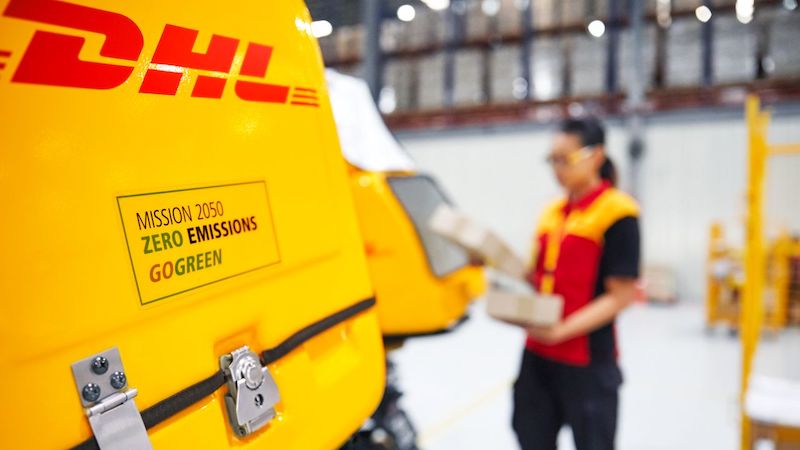Grow your business with the Discover newsletter
Logistics advice & insights straight to your inbox
Subscribe now
In the digital age, immediacy has transformed from a luxury to an expectation. Nowhere is this clearer than in the rising demand for express air shipping. However, this urgency to transport goods faster through the skies has a less visible but significant downside: greenhouse gas emissions. This stark environmental realisation underscores the pressing need for a more green supply chain.
For businesses in Australia, the path forward isn't just about meeting local or international delivery timelines; it's about doing so sustainably. Embracing a green supply chain is becoming less of a choice and more of a strategic necessity, especially as consumers and regulations increasingly lean towards achieving net zero emissions.
As highlighted by a 2023 study from Digital Commerce 360 and Bizrate Insights involving 1,017 online shoppers, consumers are showing a growing preference for eco-focused options when making online purchases. Specifically, 30% of respondents expressed willingness to wait longer for combined product shipments, while 7% were ready to pay a premium for greener shipping methods.
With that, let's explore some actionable ways businesses can work towards sustainable supply chain management:
One of the initial touchpoints between a consumer and a business is packaging. Conventional packaging solutions like bubble wrap, shrink wrap, and polyethylene bags are often wasteful and non-biodegradable, leading to significant environmental problems. By using carbon footprint calculations, businesses can gauge the precise environmental impact of their packaging choices, shedding light on areas of improvement. Green packaging, for instance, presents a solution.
By opting for sustainable packaging materials like bamboo — a fast-growing, renewable resource; mushroom packaging, both biodegradable and compostable; or recycled cardboard, which repurposes waste into something useful, businesses can make a tangible dent in their carbon footprint. Furthermore, sustainable packaging not only reduces waste along the supply chain but can also resonate with consumers, enhancing brand image.
Instead of sending out multiple shipments with half-empty cargo spaces, businesses can consider consolidated shipping. Consolidated shipping is essentially the logistics equivalent of carpooling. Instead of dispatching numerous shipments individually – each possibly using only a fraction of the available space – businesses can combine, or 'consolidate', multiple orders destined for similar locations into one shipment. This process ensures that vehicles are loaded to their maximum capacity, optimising each journey's efficiency. The fewer trips made, the less the fuel consumed, and the lower the overall environmental impact.
The vehicles used in transportation play a pivotal role in determining the sustainability of a supply chain. While traditional combustion engines have been instrumental in powering the logistics sector for decades, they've simultaneously been a major source of greenhouse gas emissions. This has necessitated a shift in environmental practices within the industry, prompting businesses in Australia to reimagine their fleet choices. Here’s how they are making strides:
Unlike their gasoline or diesel counterparts, EVs emit no greenhouse gases during operation. This singular trait positions them as pivotal agents in the decarbonisation of the logistics industry. As battery technology advances and charging infrastructure expands, EVs are becoming an increasingly practical choice for logistics operations, even for longer hauls.
Moreover, when charged using electricity from renewable sources, such as solar or wind, the entire life cycle emissions of EVs drop dramatically. This shift not only contributes to the reduction of greenhouse gas emissions but also offers businesses potential cost savings in the long run, given the volatile nature of fossil fuel prices.
For Australian businesses reliant on air freight, turning to SAFs offers a green alternative. Derived from alternative feedstock like used cooking oil, corn and waste, SAFs can emit up to 80% less life cycle emissions than conventional jet fuels. Particulate emissions are diminished by 90%, while Sulphur emissions are brought down to zero. SAFs are steadily gaining traction, promising a future of green logistics transportation.

Logistics, often behind the scenes, plays a critical role in determining the sustainability of a company's operations. Traditional logistics systems, while functional, frequently overlook the environmental implications of their processes. But with the pressing need for net zero emissions, solutions for energy-efficient logistics are becoming paramount. Collaborating with green logistics partners is a strategic step in this direction. Such partners employ strategies such as using sustainable transport means, embracing green transportation tech, or using recyclable packaging materials.
DHL Express, a frontrunner in global shipping and logistics, has recognised this evolving need and responded with the introduction of its GoGreen Plus initiative. But what does this mean for businesses in Australia and, more importantly, the environment?
While many organisations venture into carbon offsetting – an initiative where companies invest in external projects, like tree planting, to reduce their carbon footprint – DHL Express is championing the concept of carbon insetting with GoGreenPlus. This means that DHL Express is taking measures to reduce emissions directly within its own operations and supply chain, resulting in more immediate and tangible benefits.
Insetting is also acknowledged by the Science Based Target initiative, signifying its effectiveness in directly curbing emissions associated with a company's operations down its supply chain.
With GoGreen Plus, businesses are guaranteed a 30% reduction in carbon emissions associated with their shipments. This significant decrease is primarily facilitated through the strategic use of SAF. The GoGreen Plus service is made easily accessible to DHL Express customers. When booking a shipment through MyDHL+, customers can simply opt for the GoGreen Plus service to ensure their shipments are handled with this sustainable approach.
As businesses explore how to be sustainable, aligning with a logistics partner that exemplifies green initiatives is crucial. By understanding the impact of environmental sustainability and recognising the efforts of logistics providers like DHL Express with the GoGreen Plus initiative, businesses can make informed decisions that benefit both their bottom line and the planet. Open a business account today to get started.